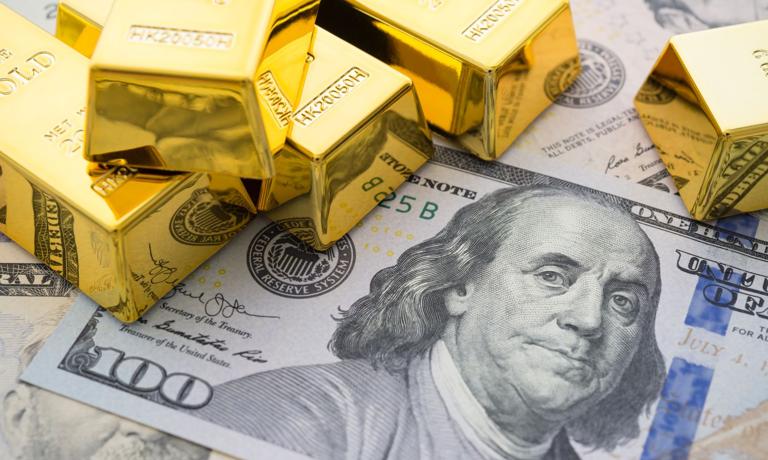The Dow Jones Industrial Average ended the day down 0.59%, at 33,402.38 points. The S&P500 fell by 0.58%, closing at 4,100.60 points. The Nasdaq index fell by 0.52%, to close at 12,126.33 points.
It was the first red session on Wall Street after four consecutive days ended in the black. Before today’s session, the S&P500 has seen 7 out of 8 days of growth. In general, since mid-March, New York indices have risen, recouping losses after declines in February and the first part of last month.
In post-session comments, much space was devoted to the upcoming recession. Based on the slope of the yield curve, the Federal Reserve’s New York branch model shows that the implied probability of a recession in the next 12 months is 57.8%. This is the highest value in 40 years. In the four previous recessions, it was sufficient for this model to estimate recession probabilities of at least 30%.
This narrative has been compounded by weaker – though unsurprising – data from the economy. In February, the value of durable goods orders, in line with economists’ expectations, fell 1% after a 5% decline in January. But we all know that both the US and global manufacturing sectors are in the doldrums, at least since last fall.
Bank stocks fell again. Morgan Stanley, Wells Fargo and Bank of America shares fell more than 2%. This came after JP Morgan Chase CEO Jamie Dimon warned shareholders that the US banking crisis is still ongoing and will have long-term consequences.
Because of this, the market hopes that the Federal Reserve will end the cycle of increasing interest rates and start cutting them significantly already in the second half of the year. Currently, the futures market prices the chances of not increasing the federal funds rate in May by about 60%. By the end of the year, the market expects cuts of 75 basis points in total. for current levels.
In this context, it is hard not to notice another sharp drop in US Treasury yields in recent weeks. 2Y Tresials yield decreased 14 basis points, to 3.83%. Just a month ago, it topped 5% and was the highest since 2007. It’s also a sign that the debt market expects significantly lower short-term interest rates over the next few quarters.
Other markets have reacted to this as well. The dollar weakened against the euro, and the euro/dollar exchange rate was close to its highest level in February. Fears of a recession coupled with high inflation and expectations of a Fed rate cut have become a concern for gold prices. The futures market has priced an ounce of the royal metal at approximately $2,040. This is just below the all-time nominal highs of August 2020 and March 2022 ($2077/oz).

Echo Richards embodies a personality that is a delightful contradiction: a humble musicaholic who never brags about her expansive knowledge of both classic and contemporary tunes. Infuriatingly modest, one would never know from a mere conversation how deeply entrenched she is in the world of music. This passion seamlessly translates into her problem-solving skills, with Echo often drawing inspiration from melodies and rhythms. A voracious reader, she dives deep into literature, using stories to influence her own hardcore writing. Her spirited advocacy for alcohol isn’t about mere indulgence, but about celebrating life’s poignant moments.







